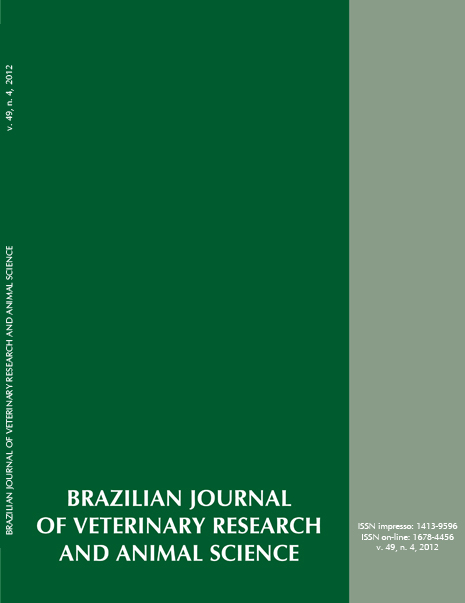Morphological differentiation of the epididymis of guinea pig (Cavia porcellus) at different ages
DOI:
https://doi.org/10.11606/issn.1678-4456.v49i4p307-317Keywords:
Epididymal epithelium, Postnatal development, Morphology, Guinea pigAbstract
The morphological evolution of the epididymal duct of guinea pigs (Cavia porcellus, L.) was studied on 10, 20, 30, 45, 60, 70, 90 and 100 days of age, being complex, which is due to the proper differentiation postnatal in the epididymal epithelium. Thus, it was observed that the initial segment of the epididymis reveals an increase of epithelial height corresponding to the average height of the main tubular epithelium cells, generally progressive after 45 days of age. The epithelial height in the middle segment were higher in younger stages (10 to 45 days) than in the prepubertal age (60 days), and have a decrease among 70 to 100 days of age. The ductular terminal segment starts a gradual decrease of the epithelial heights from puberal age (70 days), until adult age (90 to 100 days). In addition, this segment showed epithelial waviness that disappeared after 70 days of age, when the lumen fills it with sperm and cellular exfoliation. The cell types of the epididymal tubular epithelium, principal cells, basal cells and apical cells, were observed in all ages. In the epididymis of very young animals, there was a predominance of undifferentiated columnar cells. After 20 days of age, there was natural prevalence of the principal cells on other cell types, what is a feature similar to other mammals.
Downloads
Downloads
Published
Issue
Section
License
The journal content is authorized under the Creative Commons BY-NC-SA license (summary of the license: https://





